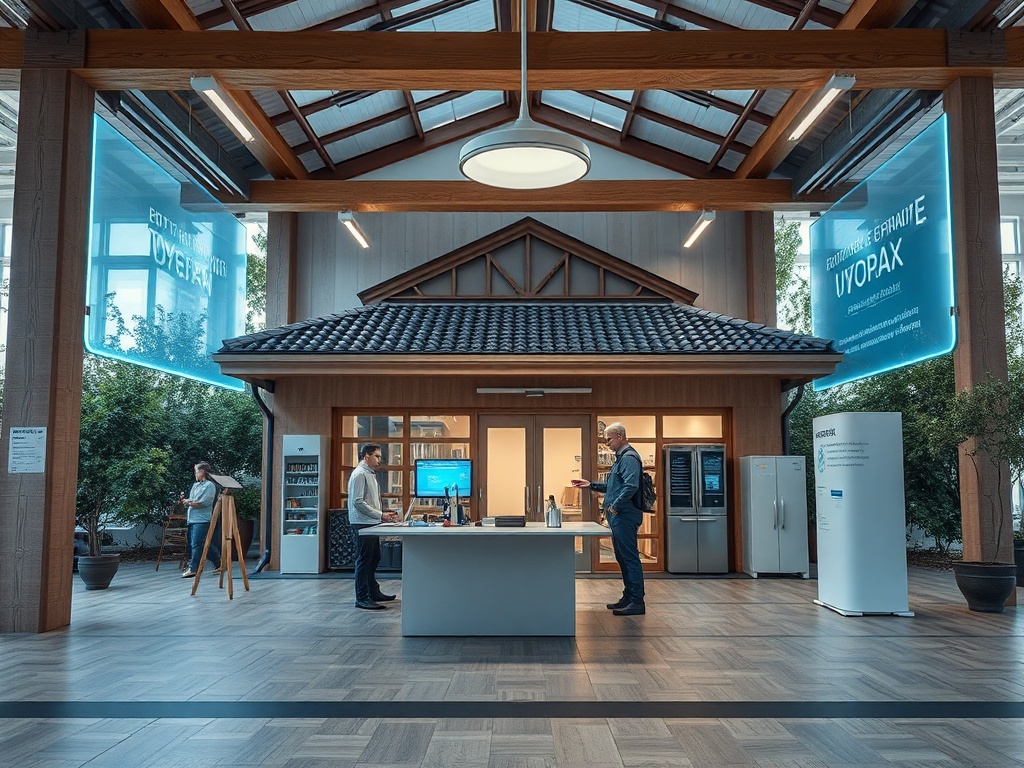The cleaning and maintenance industries are experiencing an exciting transformation, largely driven by technological advancements. With each passing year, we witness innovations that enhance efficiency, improve safety, and promote sustainability. Among these innovations, we see a notable shift towards automation and artificial intelligence, creating opportunities for businesses to streamline their operations. Additionally, eco-friendly products have gained traction, fueled by consumers’ increasing awareness of their environmental impact. This article explores the most significant technology trends that are redefining how cleaning and maintenance services operate. Understanding these trends is crucial for businesses aiming to stay competitive and meet evolving consumer demands.
Today, cleaning business software solutions are also making waves by automating scheduling and inventory management, freeing up valuable time for cleaning professionals. This software is a vital asset in managing resources effectively, optimizing labor, and ensuring quality control in service delivery. The cumulative impact of these technologies emphasizes a fundamental shift—cleaning and maintenance are evolving from traditional practices to data-driven, eco-conscious operations. As we delve into these trends, you’ll see how innovation is not just a luxury, but a necessity for future viability in this industry.
Automation in Cleaning

Automation has emerged as a defining characteristic of modern cleaning operations, significantly changing the landscape of this industry. Robotic cleaners are at the forefront of this technological revolution. These state-of-the-art devices leverage artificial intelligence to navigate various environments autonomously. Not only can they efficiently clean floors and surfaces, but many models also feature smart mapping capabilities, allowing them to learn and adapt to their surroundings. This adaptability makes them suitable for a wide range of applications, from residential areas to large commercial spaces. As a result, businesses can significantly reduce labor costs while maintaining high standards of cleanliness.
Robotic Cleaners
Today’s robotic cleaners can handle various tasks, simplifying operations for cleaning staff. They are programmed to avoid obstacles, return to charging stations, and even synthesize cleaning protocols based on usage patterns. Some advanced models come equipped with cameras and sensors to improve navigation and efficiency. Many businesses are already experiencing the advantages of including these robotic solutions in their cleaning processes. However, as with any technology, it is essential to weigh the initial investment against long-term savings.
Smart Monitoring Systems
Another compelling trend is the implementation of smart monitoring systems. These technologies allow for real-time tracking of cleaning schedules and effectiveness. Data analytics derived from these systems enable companies to make informed adjustments that optimize cleaning protocols. Consequently, businesses can achieve better resource allocation and service delivery that resonates with customer expectations. Additionally, these systems can contribute to improved employee productivity by alleviating manual tracking duties.
Eco-Friendly Innovations

As societal awareness of environmental issues rises, the cleaning industry is making significant strides toward eco-friendly practices. The availability of biodegradable cleaning products has increased dramatically in recent years. These products are formulated to be safe for both users and the environment, catering to customers who prioritize sustainability. The shift includes a noticeable decline in harmful chemicals typically used in cleaning solutions. Overall, eco-friendly innovations are reshaping consumer preferences and behavior in the cleaning marketplace.
Biodegradable Cleaning Products
Many companies are now formulating biodegradable products that decompose naturally without leaving harmful residues. These solutions not only perform effectively but also align with global sustainability goals. The environmentally conscious consumer base, increasingly aware of its purchasing impacts, is driving businesses to adopt these alternatives. As such, more brands are emphasizing eco-friendly labels on their products. This commitment increases brand loyalty, as clients appreciate companies that prioritize their health and the planet.
Waterless Cleaning Technologies
Innovative waterless cleaning technologies are also gaining traction, especially in commercial settings where water conservation is crucial. These methods utilize specialized products and techniques that eliminate the need for water while ensuring cleanliness. Such advances are particularly important in regions prone to water scarcity, making them a significant selling point for businesses. The result is not only effective cleaning but also a commitment to environmental sustainability. As this trend continues, it may very well represent the future of maintenance services.
| Technology Trend | Benefits | Applications |
|---|---|---|
| Robotic Cleaners | Efficiency, reduced costs, consistency | Residential, commercial, industrial |
| Smart Monitoring | Data-driven decisions, optimized resources | All cleaning sectors |
| Eco-friendly Products | Safety, sustainability, customer loyalty | Home care, facility management |
The Role of IoT in Maintenance
The Internet of Things (IoT) is becoming an integral part of maintenance operations, revolutionizing how services are delivered. By allowing machines and devices to connect and communicate, IoT makes it possible to gather data that informs maintenance decisions. One profound advantage of IoT technology is predictive maintenance. This proactive approach allows companies to monitor machinery in real-time and address potential issues before they lead to breakdowns. The financial benefits are significant, as companies experience reduced downtime and lower repair costs.
Predictive Maintenance
Predictive maintenance tools minimize the chances of equipment failure by identifying potential issues early on. This not only extends the lifespan of machinery but also contributes to workplace safety, mitigating the risks associated with sudden breakdowns. By relying on data-driven insights, businesses can allocate resources efficiently and prioritize maintenance tasks effectively. As a result, the overall operational efficiency is improved.
Asset Tracking
Furthermore, IoT technologies facilitate real-time tracking of cleaning and maintenance assets. This capability enhances accountability and efficiency in operations. For instance, businesses can monitor the status of their cleaning supplies and machinery, ensuring that resources are always available when needed. This level of oversight enables companies to streamline operations, manage inventories effectively, and ultimately save costs. Moreover, real-time tracking encourages responsible usage and promotes a culture of efficiency among staff.
Integration of AI and Machine Learning
Artificial intelligence and machine learning are taking the cleaning and maintenance industries by storm. These technologies are increasingly being integrated into various cleaning solutions to enhance productivity and service quality. Data-driven cleaning solutions, powered by AI algorithms, can sift through large datasets to find patterns and optimize cleaning schedules. By predicting high-traffic areas, devices can allocate resources effectively, thereby improving cleaning efficiency. This technology not only minimizes operational costs but also delivers better service quality to clients.
Data-Driven Cleaning Solutions
Data-driven cleaning solutions identify peak usage times, allowing businesses to schedule cleaning at times when it will be least disruptive. This capability is vital for sectors like healthcare and hospitality, where cleanliness is of utmost importance. By leveraging data analytics, companies can ensure maximum effectiveness while providing seamless service to clients. Consequently, this results in higher customer satisfaction and better employee engagement.
Routine Task Automation
Additionally, machine learning algorithms can automate routine management tasks such as staff scheduling and inventory management. This automation increases efficiency and allows employees to focus on more complex tasks that require creativity and human judgment. With the repetitive tasks taken care of, staff can dedicate more time to service-oriented roles. They become more accountable and engaged, which translates to improved service delivery and enhanced customer experiences.
Conclusion
In conclusion, the latest technology trends in the cleaning and maintenance industries are reshaping how businesses operate. As we have explored, automation, eco-friendly innovations, IoT integration, and AI advancements are driving significant changes. Embracing these advancements is no longer optional; it is essential for staying relevant and competitive in the fast-paced marketplace. As businesses adopt these new technologies, they will not only streamline operations but also meet the rising expectations of a more environmentally conscious consumer base. Ultimately, those who leverage these trends will position themselves as leaders in the industry, ready to tackle the challenges of tomorrow.
Frequently Asked Questions
- What are the key benefits of robotic cleaners?
Robotic cleaners offer efficiency, reduced labor costs, and consistent cleaning results while freeing up staff for more complex tasks. - How do eco-friendly products help the environment?
Eco-friendly products minimize harmful chemical exposure and reduce waste, contributing to a healthier planet. - What is predictive maintenance?
Predictive maintenance uses IoT devices to monitor equipment conditions, allowing businesses to fix issues before they lead to equipment failure. - How can businesses track cleaning assets effectively?
By utilizing IoT technology, businesses can monitor their assets in real-time, ensuring optimal utilization and reducing losses. - What role does AI play in cleaning operations?
AI analyzes data for cleaning optimization and automates routine tasks, leading to improved efficiency and service quality.
